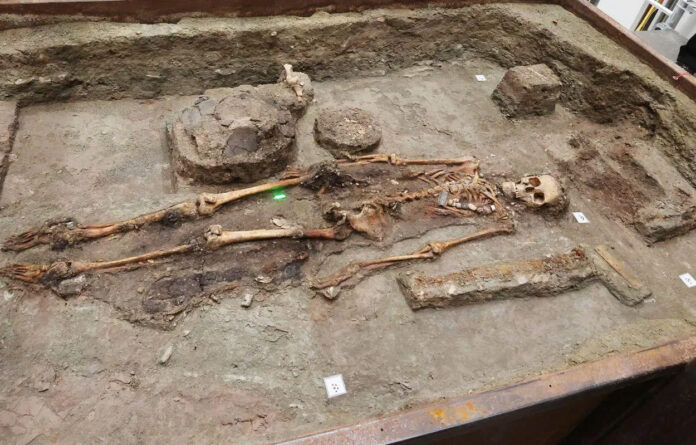A fascinating archaeological discovery in Germany has revealed an extensive settlement site spanning four millennia, highlighting the remarkable story of a young noblewoman now known as the “Lady of Kölleda” and her contemporaries from the Merovingian period.
The Ancient Settlement and Its Inhabitants
The archaeological site, spanning an impressive 4,000 years from the 4th millennium BC to the 7th century AD, has yielded 17 burials dating to the 6th and 7th centuries AD. This period marked a significant transition as the former Thuringian Kingdom became integrated into the expanding Frankish Empire.
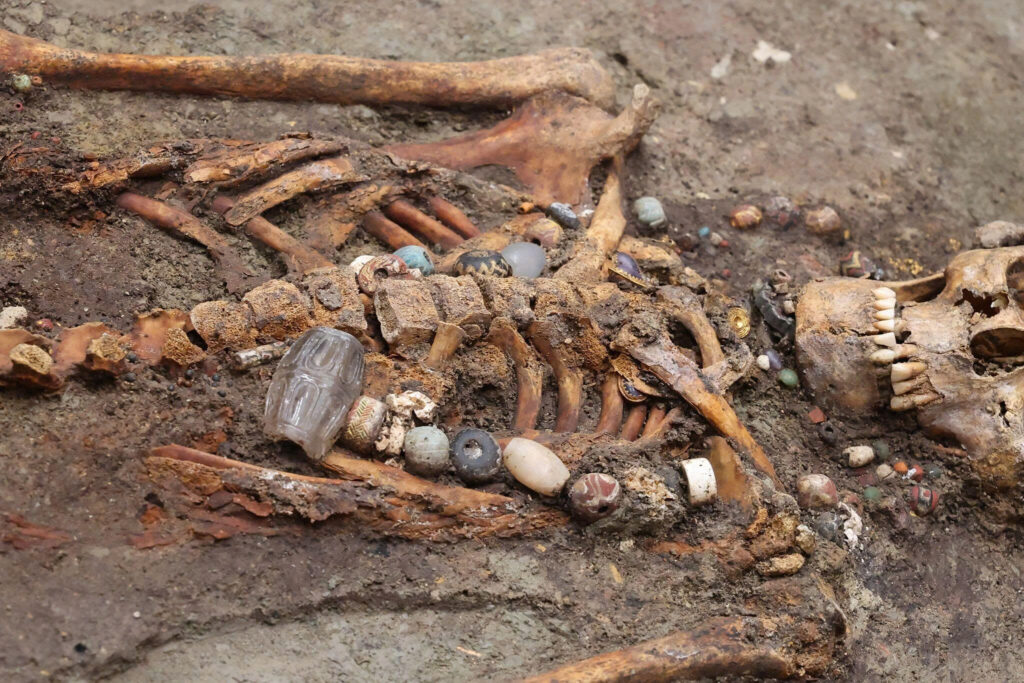
The excavation revealed a substantial Merovingian settlement consisting of approximately 70 structures dating back 1,300 years. According to the Thuringian State Office for Heritage Management and Archaeology (TLDA), this discovery is particularly significant as it represents one of the few fully documented Merovingian settlements in central Germany, complete with its associated burial ground.
Remarkable Burial Practices
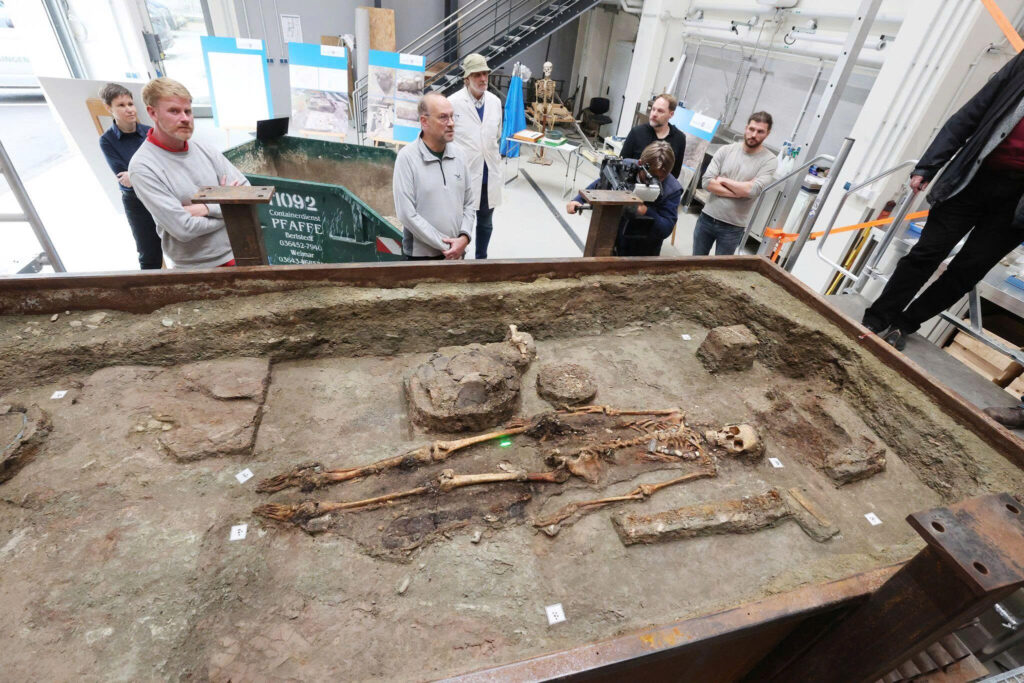
The burial site provides fascinating insights into Merovingian funeral customs and social hierarchy. Eleven of the seventeen graves contained decapitated horses, a practice associated with high-status burials. The wooden burial chambers were filled with luxurious grave goods, including:
- High-quality weapons
- Precious jewelry
- Luxury glassware
- Rare bronze vessels from the eastern Mediterranean
Video
The Lady of Kölleda: A Young Noblewoman’s Story
The most remarkable discovery was the burial of a young woman, now known as the “Lady of Kölleda.” Her burial chamber, distinctively edged with large field stones, required careful extraction and transportation to the TLDA in Weimar-Ehringsdorf for detailed micro-excavation.
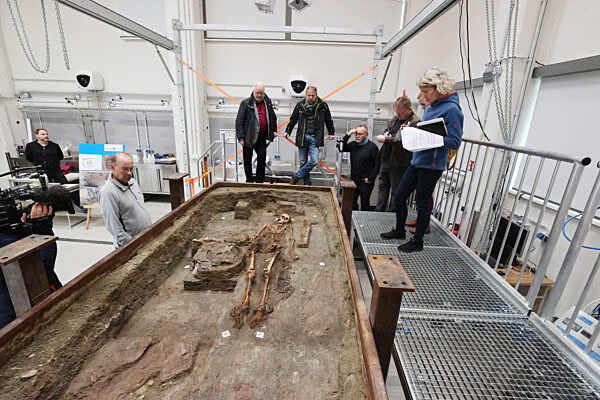
The analysis revealed that the Lady of Kölleda died between the ages of 25 and 30. Her grave contained an impressive array of artifacts:
- Multiple pieces of gold and silver jewelry
- A finely crafted bronze basin
- Various food offerings
- Personal items of exceptional quality
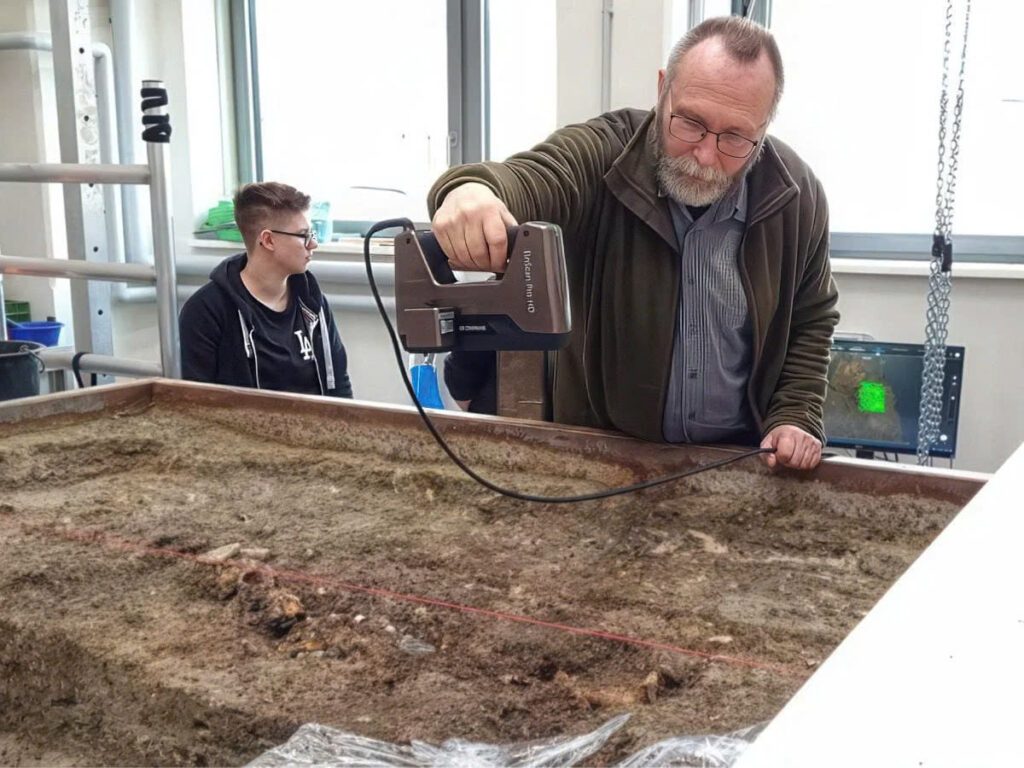
The sophisticated craftsmanship of these artifacts suggests extensive cultural connections reaching as far as central Italy and the Mediterranean region, highlighting the far-reaching trade networks and cultural influences of the Merovingian elite.
This extraordinary discovery not only provides valuable insights into Merovingian society but also demonstrates the sophisticated cultural and economic connections that existed across Europe during this pivotal period in history.
